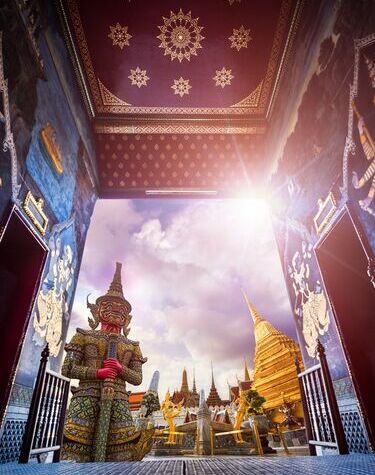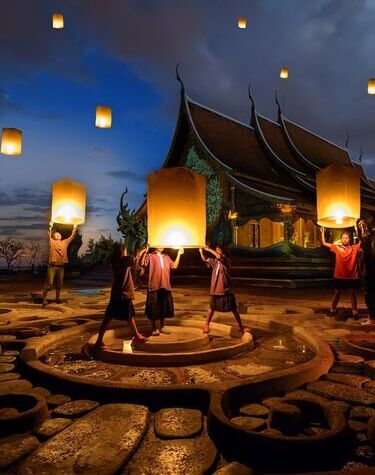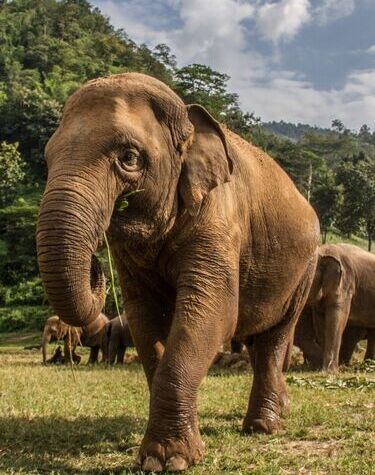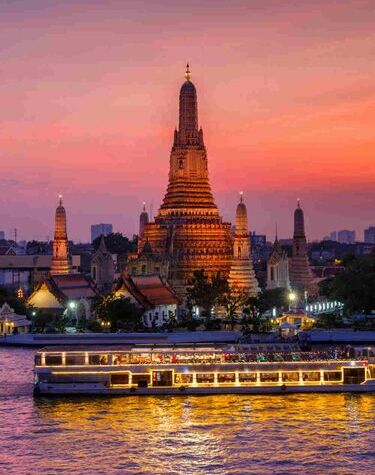With famous street foods, amazing beaches, lush jungles, cheap prices, Thailand is the most famous attraction of Southeast Asia. If you’re considering Thailand as your next destination, now it’s time to learn this country from A to Z.
HOW TO GET THERE?
Thailand currently has six international airports, in Bangkok, Chiang Mai, Hat Yai, Krabi, Phuket and Koh Samui. Most of travelers fly to Bangkok’s Suvarnabhumi Airport.
Thai Airways offers convenient flights from LA to Bangkok, with a one-hour stop in Seoul. Plenty of other airlines run to Bangkok from East and West Coast cities with one stop en route. Air Canada has the most convenient service to Bangkok from the largest number of Canadian cities of Vancouver and Toronto.
WHEN IS THE BEST TIME TO VISIT?
1. High Season (November – March)
A cool and dry season follows the monsoons, meaning the landscape is lush and temperatures are comfortable. This is best time for scuba diving-a popular activity in Thailand and for taking part in the lantern festival.
2. Shoulder Season (April – June, September & October)
In Bangkok from April to June, it is generally very hot and dry, with an average temperature of 30°C. However. sea breezes in coastal areas provide relief from the heat.
September and October, the wettest months, are at the end of the monsoon season and it can be hard to predict the weather. It’s ideal to spend October in the Central, North and Northeast regions like Chiang Mai, Pai, Mekong River town, Koh Phangan island and Koh Samui island.
3. Low Season (July – October)
Storms during monsoon season range from afternoon showers to major flooding. Rain is usually in short, intense bursts. Some islands shut down; boat service is limited during stormy weather. Be flexible with travel plans.
WHERE TO VISIT IN Thailand
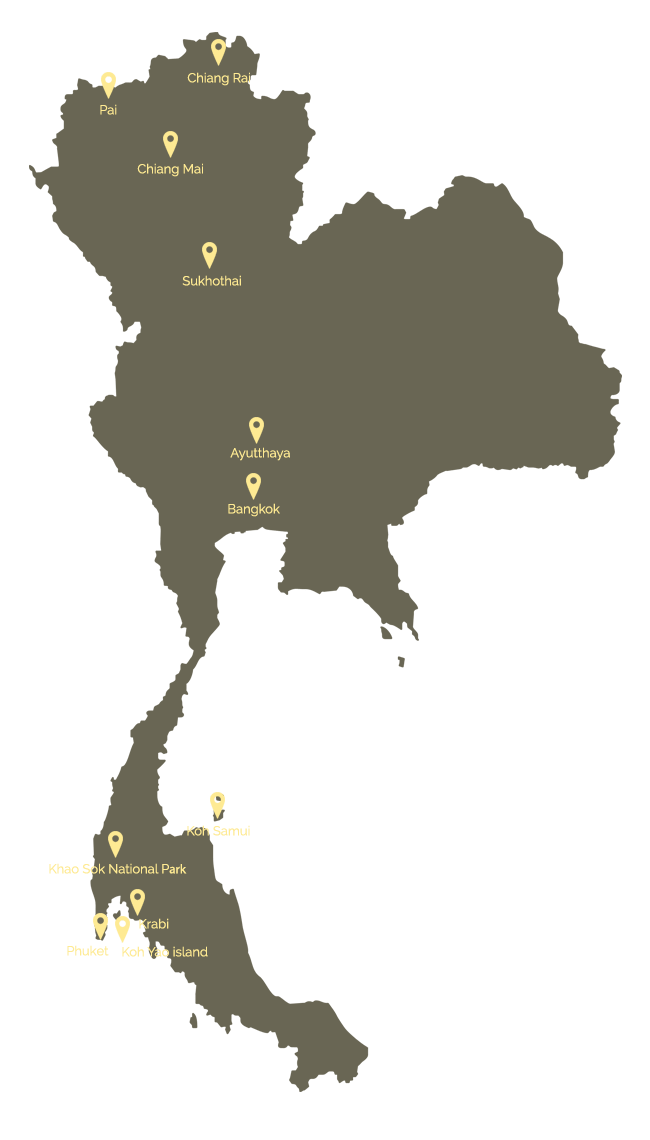
WHERE TO STAY IN Thailand
WHAT ARE BEST THINGS TO DO IN Thailand
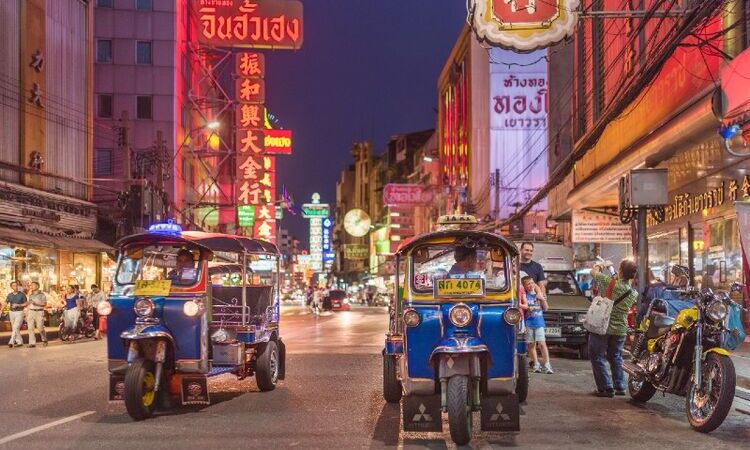
Explore Bangkok on a tuk tuk
Tuk-tuks or 'samlor' (three-wheeled) is an experience to get around Bangkok. You can take a city tour on a tuk-tuk to get around the bustling Chinatown, go shopping at Chatuchak market and don’t forget to stop for the amazing Thai street food. Normally a very short trip costs 30 baht.

Release a lantern
Yi Peng and Loy Krathong are lantern festivals that take place every November in Chiang Mai. They provide truly remarkable sights. Thousands of lanterns are released into the sky by the banks of Peng river. This is the most photogenic part of the festival, but there are also parades, religious ceremonies, fireworks and the floating lanterns on the water.

Book an island hopping tour
A trip to Thailand is incomplete without making an island hopping. There are hundreds of islands stretch along miles of coastline but here are some of the most famous names: Koh Phi Phi, Koh Chang, Phuket, Koh Lipe, Koh Samui, Koh Phangan, and Koh Tao. Find out which island is perfect for you here.
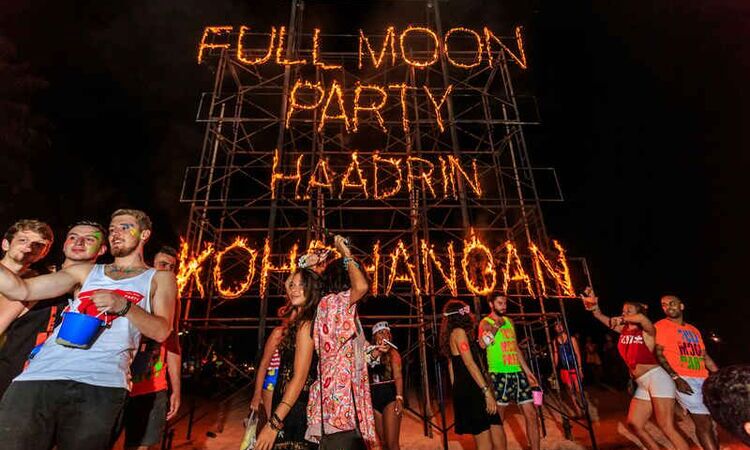
Join the Full Moon Party
Don’t miss your chance to take part in the Full Moon Party at Koh Phangan. At first, it was like a small party on the beach of some hippies and backpackers playing music and having a beer. Now, it is a giant festival-like party attracting thousands of participants looking for fun. Each bar plays its own music, the beach is full of people selling food and drink, and fire dancers puts on their shows. If you miss it, don’t worry. There is half-moon party, quarter-moon party and black-moon party waiting for you to join.

Shop at the floating markets
Bangkok’s floating markets are famous worldwide through ubiquitous colorful photos in tourist guides, travel websites and travel books. You’ll have a great chance to experience the everyday life of the local: how they live, cook and sell products on their boats. The markets also give you a big chance to sample fantastic food and fruit which you don’t normally have at home. Some of the best floating markets are Taling Chan, Bang Ku Wiang, Tha Kha and Damnoen Saduak market.
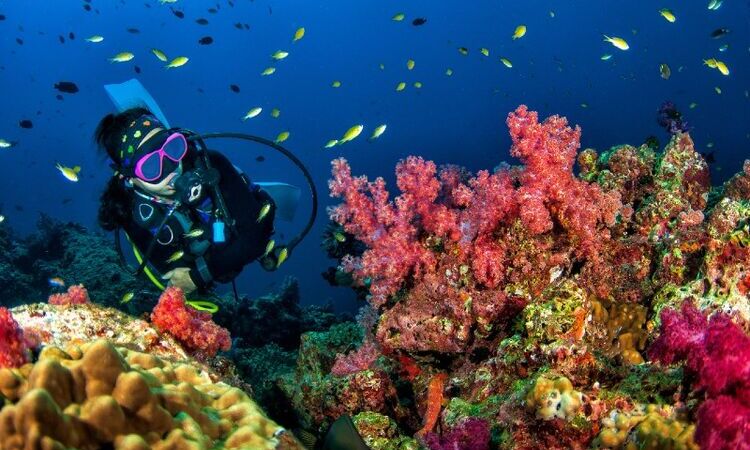
Go scuba diving
Scuba diving is a popular activity in Thailand, due to the crystal clear waters and it's incredible ocean creatures. A dive course starts from 4,500 Baht to 15,000 Baht. In return, you’ll have a ticket to get into the underwater mystery.

Experience amazing Thai food
Thailand is a true paradise of street food. You will find plenty of food stalls on every street where you can grab a snack to go. From Bangkok in the south to Chiang Mai in the north, this country has some of the most mouth-watering food in the world. It might take you a lifetime to taste all the food here.
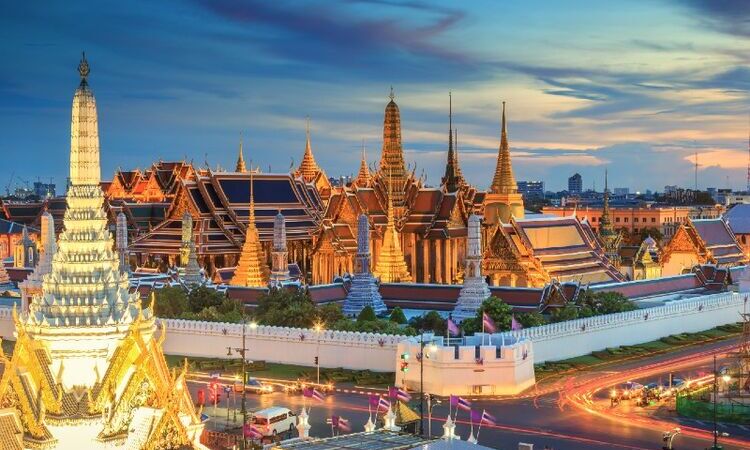
Visit The Grand Palace & Wat Prakeaw
If there is one must-see sight in Bangkok, it undoubtedly is The Grand Palace - the city's most famous landmark. Built in 1782 by King Rama I and home to the Thai King, the Royal court and the government for 150 years, The Grand Place continues to lure visitors with its amazing architecture and complicated detail - a proof of Thai people’s creativity. Wat Prakeaw is regarded as the most important Buddhist temple in Thailand and Wat Pho is famous for its golden reclining Buddha statue and a massage school within the palace complex.

Cruise down the Phang Nga Bay
A day trip cruising through dramatic limestones spires among the islands such as James Bond and Koh Pannyi, occasionally stopping at quiet beaches for sunbathing, swimming, and snorkeling is far more rewarding than you could expect.
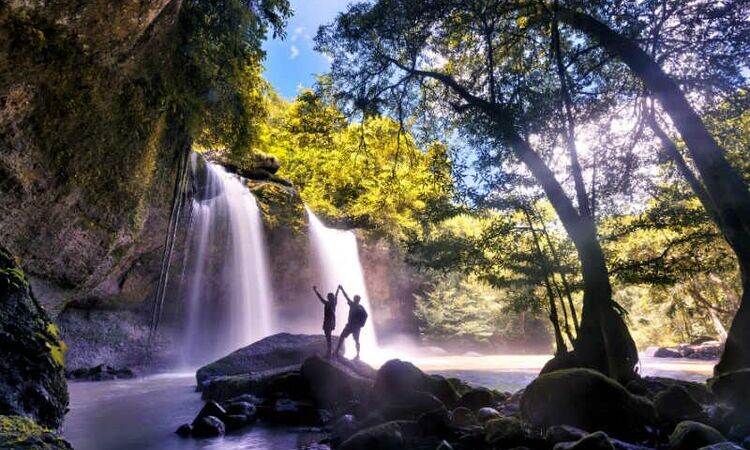
Hike in Khao Yai National Park
Khao Yai National Park, a UNESCO World Heritage Site, is located about 2.5 hours north of Bangkok and is one of the most visited national parks in Thailand. It spreads over 4 provinces including Saraburi, Nakhon Nayok, Nakhon Ratchasima and Prachinburi. Thanks to its lush landscape, rich valleys, beautiful waterfalls, and biodiversity with more than 320 species of birds, 67 species of mammals and thousands of different types of plants, Khao Yai is an excellent place for hikers.

Shop at night markets
There’s no better way to experience a country’s culture than its market. Night markets in Thailand offer an unforgettable experience, as well as a fantastic opportunity for some really good shopping.

Get wet in Songkran (Water festival)
Songkran is an annual festival which takes place 3 over days between April 13 to 15th to celebrate the Thai New Year. Local people and travelers rush down the streets and start a water fight by all means they have: water guns, water pipes, buckets or anything which can hold water to splash other people. You can see wild scenes with music, dance and thousands of people who are drenched from head to toe. Remember to keep your electronics in the hotel or seal them in a plastic bag before engaging in a battle. You will get wet everywhere you go during this period.

Yoga retreat
Thailand offers some of the finest yoga retreats in the world. Book a few days at one of the luxurious retreats where you can practice yoga with top experts, delight in delicious health-conscious cuisine, and meditate in a serene atmosphere surrounded by lush jungles. And when you come back, you will feel wholly rejuvenated.

Rest in Pai
For many people, coming to Pai simply means slowing down completely. Some can choose to relax at a lovely cafe gallery enjoying the quietness of nature. Who looks for more adventure can try bamboo and white rafting, mountain trekking, and exploring the Tham Lot cave.

Get close to the Elephants
If you love wild animals and wanted to get up close with elephants, Thailand is the place for you. Many elephants in Thailand have suffered abuse, overworked and poorly fed. Luckily, some are rescued and sent to elephant parks to live a happier life. Visit one of these ethical parks and work as a volunteer to give more love and care to these gentle creatures. Visit one of these ethical elephant parks and work as a volunteer to give more love and care to these gentle creatures.
HOW TO EXCHANGE YOUR MONEY?
The official currency of Thailand is the Baht and both coins and bills are used. In general, the exchange rates available for THB will be better in Thailand than at home. Exchange services in Thailand tend to claim ‘zero commission’ - but make sure you can see the exchange rate being offered. Usually, when services advertise a service without commission or fees, their profit is wrapped up in the poor exchange rate they offer. ATMs are plentiful in Thailand. Cash is the preferred method of payment for most Thai people, so using an ATM to make withdrawals can be a convenient option for travelers. Ask your local bank before you leave if they have any arrangements with Thai banks to allow you to get access to services more cheaply. If they don’t, you can expect that an ATM in Thailand will add a fee of 150-180 Baht for each withdrawal (around 5 US dollars)
HOW TO GET AROUND?

Buses: Extensive and affordable for travel between towns.

Air: Cheap and frequent domestic airlines.

MRT (Subway) & BTS (Skytrain) for quick and cheap transportation in Bangkok.

Scooter: Easy to hire for local touring. Quick note: Thai drive on the left side of the road.

Taxi: So many local taxi companies to choose from.
WHAT TO BUY IN Thailand
Tips & tricks
- Book all the services in advance to save money.
- Travel during the low season between April and September to avoid crowds. You can enjoy more and access popular places easier.
- Rent a motorbike to have much more fun. Motorbiking saves you more money than taking taxis all the time. Make sure to be safe and wear a helmet!
- Don’t bring too much luggage. You can always buy a quality case for your souvenirs at a great price. Don’t bring too many clothes either. Thai clothes are colorful and much cheaper.
- Take advantage of the tour to visit more attractions, get more amazing moments, and more interesting experiences for a cheaper price.
- Follow Thailand’s laws to avoid trouble, like fines or jail time.


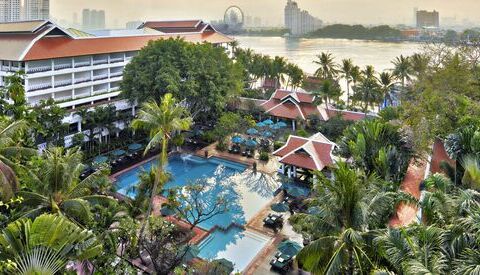


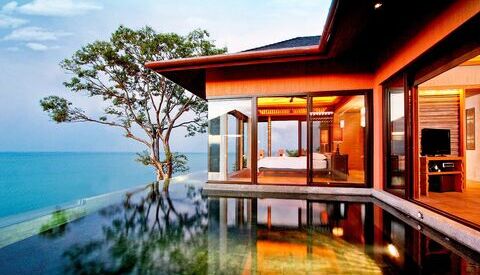
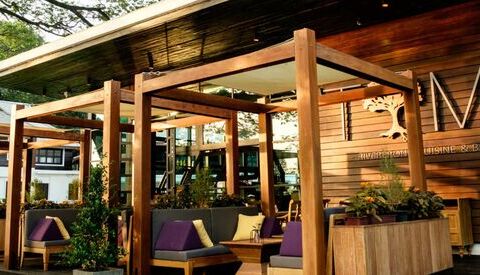






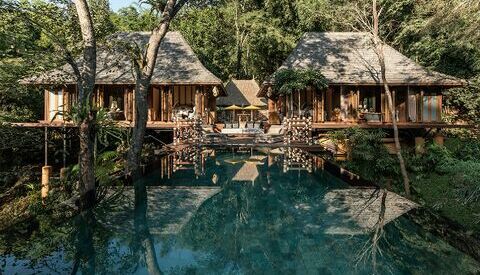
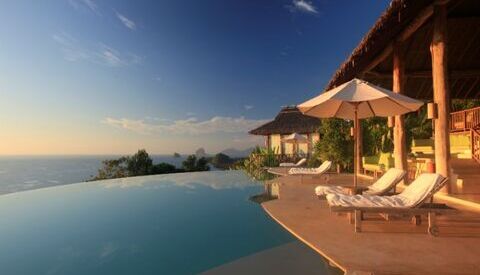






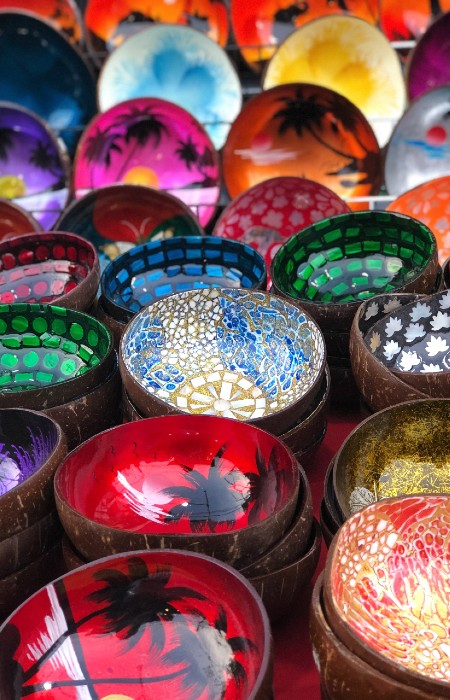

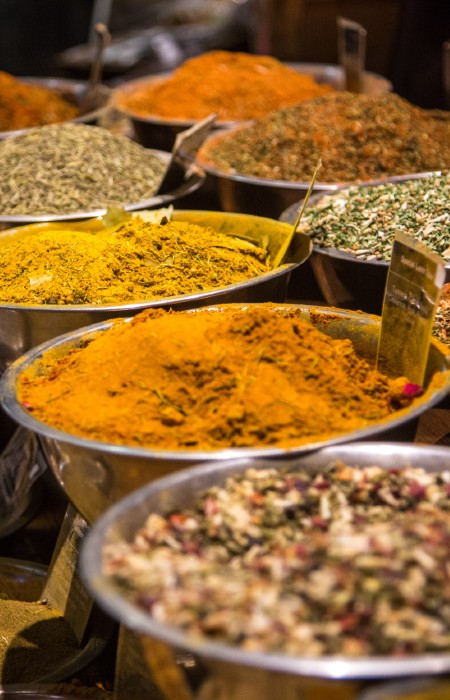


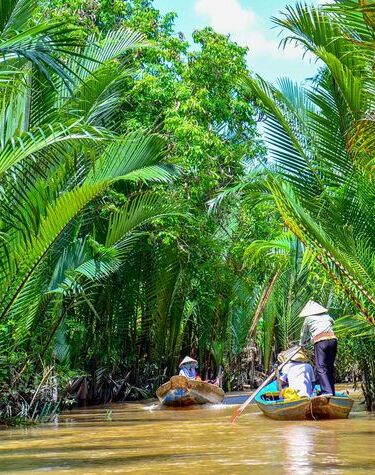
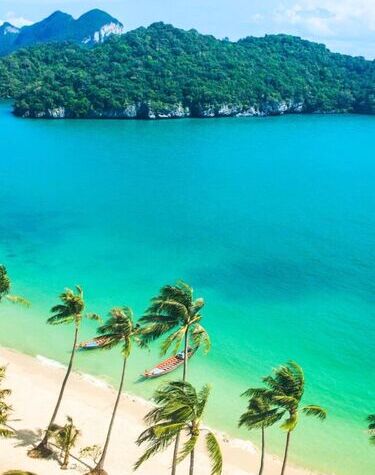

.jpg)
